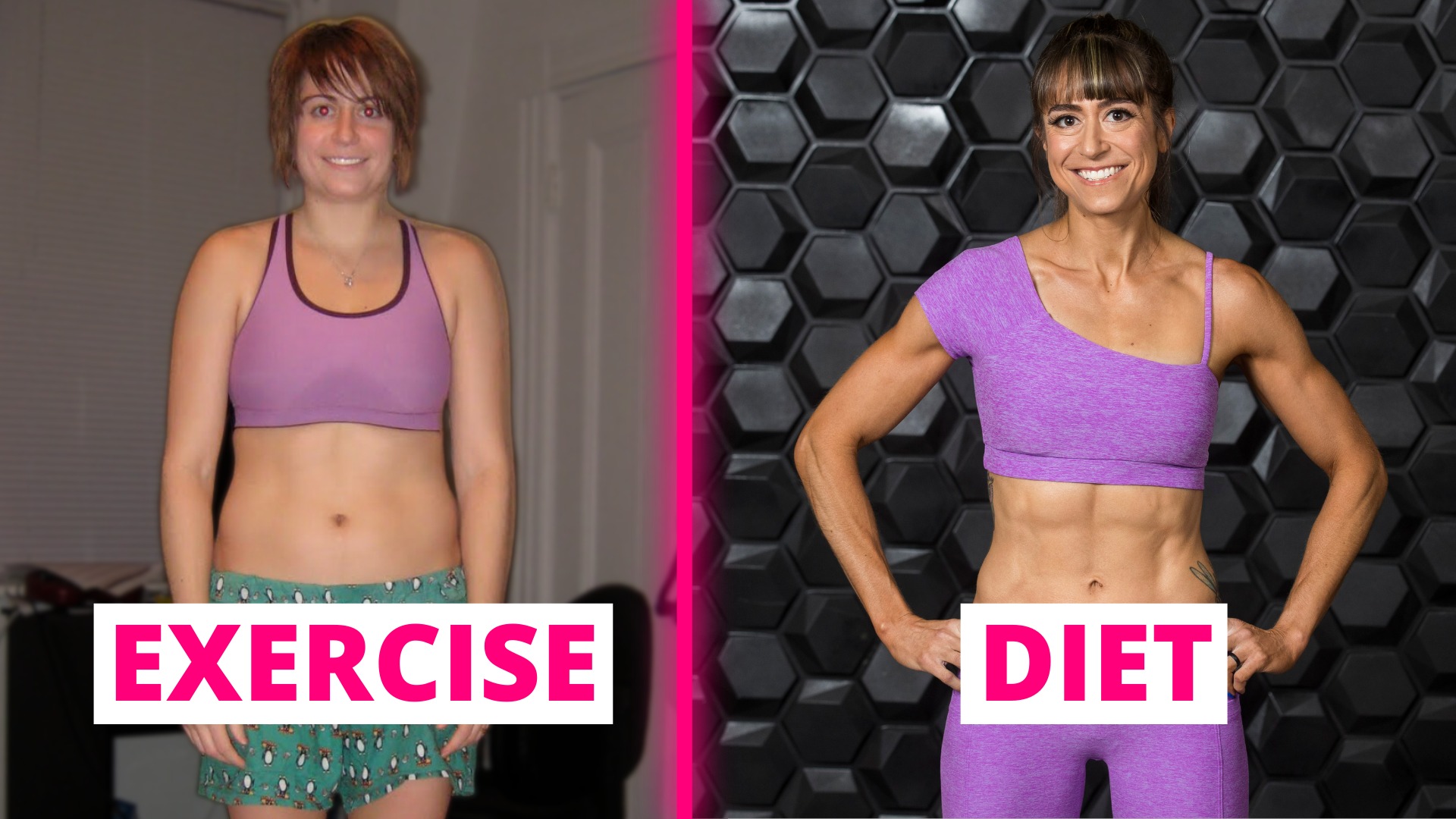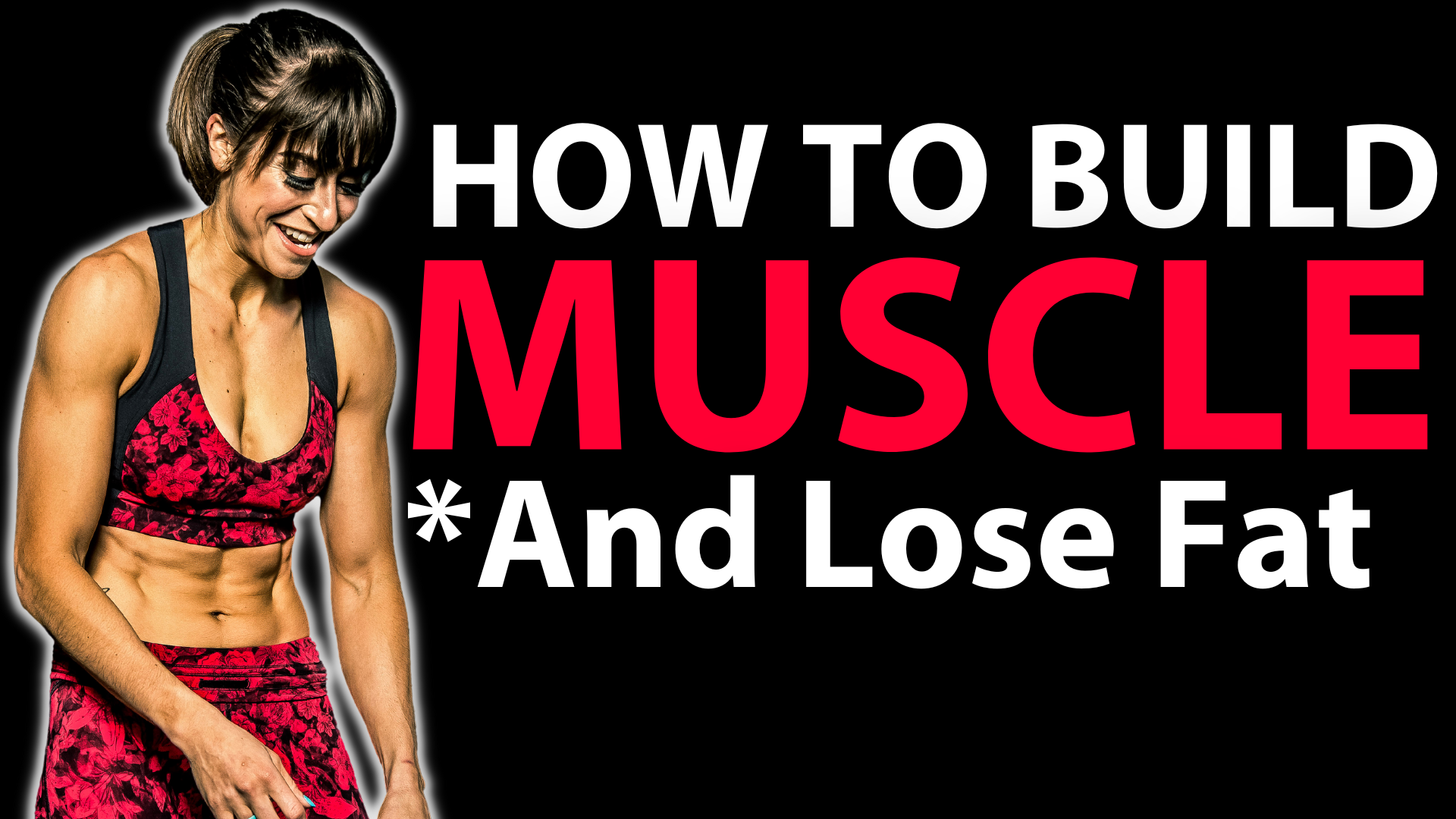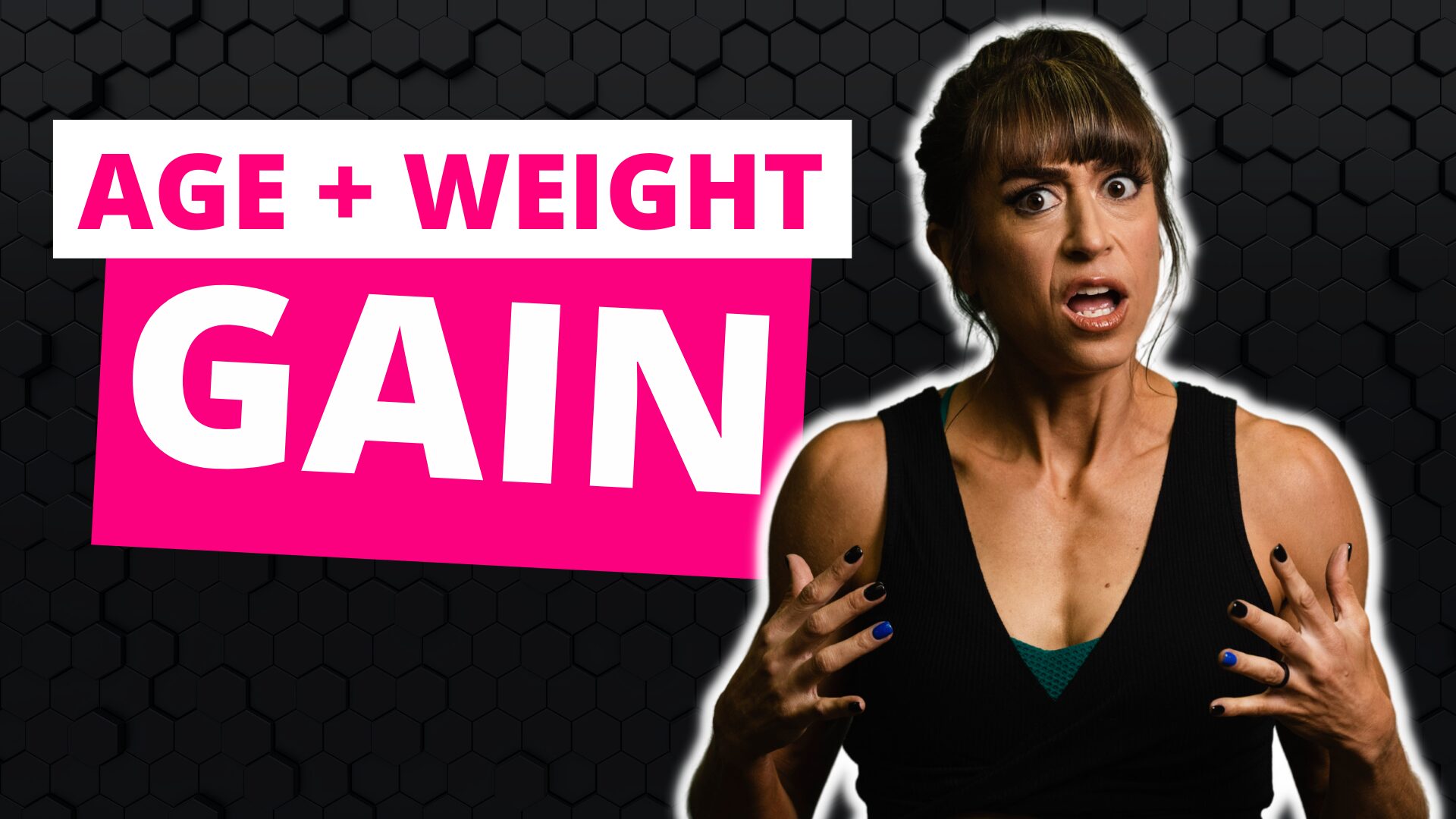
FIX 93% Of Your Problems With 4 Diet Changes
The changes we least want to make are the ones we need the most.
And often we already know the answer to the question of “What diet changes do I need to make to see results?”…we just need to be REMINDED of what to do.
We need to be reminded to take our ego out of the equation and go back to basics.
We need to be reminded to Suck It Up Buttercup and do the hard habits that lead to results.
That’s why I’m going to start by telling you the change you need to make the most but will most want to avoid, and probably have even listed out tons reasons not to do like…
It’s restrictive
I don’t want to be obsessive
It’s too time consuming
It’s too hard
I can’t because I cook fresh
I can’t because I eat out and travel
I can’t because I have a family
I can’t because…
You can probably come up with 100s of reasons why you don’t need to do this and shouldn’t have to…
But guess what?
All of those reasons haven’t moved you forward toward your goals.
They’ve held you back from making the change you need the most to see your hard work in the gym and your “healthy” diet paying off in the fat loss and muscle gains you want…
And that change is…

Tracking what you’re eating.
Tracking gets a bad rap for being restrictive and obsessive.
But guess what?
It’s not.
We may have a restrictive or obsessive mindset when tracking, but we can have that mindset without doing either.
Eliminating whole food goods while not tracking is restriction.
Fearing foods and believing you can’t eat “unclean” foods or that foods are bad for you can become an obsession.
Neither of these revolves around tracking and can happen even if you aren’t.
And the more we recognize that it is our mindset and how we’ve used the TOOL of tracking in the past, like to cut out foods and make ourselves feel guilty, not tracking itself that is restrictive, the more we can take back control and use this tool to our advantage.
That being said, one form of tracking isn’t right for everyone, BUT we’ve got to see the opportunity in the options.
Because what gets measured gets managed.
If you don’t accurately know what you are consuming and the portions you’re consuming those foods in, you can’t make an accurate change.
And this is where we can get frustrated FEELING like we’re doing everything right when actually our calories and macros aren’t in line with what our body needs right now.
This can be over eating or even undereating.
But we don’t know unless we track.
And while yes, measuring out everything and recording it isn’t fun, it truly helps us create a repeatable recipe for results and ultimately NOT over restrict.
So if you’ve been frustrated by your lack of results while trying to eat clean, while trying to increase protein or lower your calories…
Stop wondering what is and isn’t working.
Record your food and see the opportunity in small changes you can make off of what you’re currently doing.
It can often help us actually stop cutting out foods we love as much and even see small portion size changes or swaps that can pay off so we can build a lifestyle we enjoy!
It can even help us fuel to feel more energized and address food intolerances we may have, leading to other symptoms such as bloating or hormonal imbalances!
Which brings me to the second change we often need to make…
And that’s to stop demonizing foods and whole macronutrients.
Too often when we think about making changes to our diet to “fix” problems, we think there are magic foods to include and magic foods to cut out.
We start to DEMONIZE foods even, which ultimately just leads to a whole bunch of food guilt and self sabotage.
Are there foods that are healthier and less healthy?
Are there macro ratios, such as lower carb or lower fat, that work better or worse for certain people?
Are there foods that people can have intolerances to so we need to eliminate them?
Yes and yes and yes.
But one size doesn’t fit all.
And even what may be bad for someone else may be GOOD for you.
No, I’m not arguing that doritos chips are healthy for anyone…
BUT they may be part of your 80/20 balance so that you are actually consuming more nutrient rich food overall.
Having a little of something less nutrient dense actually allows you to stay more consistent overall and WANT to eat more fruits and veggies.
It helps you avoid feeling guilty for foods because they are “bad,” which only leads to one off plan indulgence completely derailing your healthy changes.
That guilt we create for eating specific foods or macros that have been demonized is what keeps us stuck in this horrible yo-yo dieting cycle where we feel we just don’t have the willpower to maintain the habits we “should.”
But a lifestyle balance looks unique to each person.
And our activity level, previous dieting history, age, goal and genetics, among so many other factors, can have a huge impact on what is right for us and right for us even just RIGHT NOW.
For example, low carb may be better for someone, especially if they are less active or going through menopause, while holding you back if you are super active and working on building more muscle as you lean down.
Going low carb may sabotage your body recomp efforts and even lead to thyroid issues and hormonal imbalances because your body isn’t getting the fuel it needs.
Yet carbs are so often demonized.
They are just simply labeled as evil and blamed for belly fat especially.
But that simply isn’t the case.
Macros must match our needs even as our needs shift.
We need to stop this all or nothing attitude toward foods and instead learn the upsides and downsides to things to strike our own balance.
Because even healthy foods can be “bad” for some with food intolerances too them.
Need a low FODMAP diet? You may find there are lots of supposed “healthy” fruits and veggies you even can not eat!
Another change most of us avoid that everyone needs to make, even though one size doesn’t fit all…
Is to focus on PROTEIN.
Many of us know this. But we still fight against it.
And while increasing and focusing on protein will look different for each person, this focus on quality protein is key.
That’s why I’m giving you this reminder…
Because often we need to be reminded more than we need to be taught.
The more we know the basics, the more we get distracted from them thinking we are above them and need some other 1% improvement.
When really, we just need to make small adjustments to those basics as our body, needs and goals change.
Especially as we get older, a focus on protein becomes even more key.
And if you aren’t focusing on protein and finding your healthy diet isn’t yielding the recomp you want?
Time to start tracking your protein.
Honestly, if you just track your protein and your calories, letting carbs and fats fall where they will, you’re probably going to see steady and sustainable results.
So if you’re feeling overwhelmed by all of the changes you COULD make, start by just focusing on tracking protein.
You’re already hitting all three things on this list…
Tracking.
Not demonizing foods as anything can fit and your carbs and fat can fall where is enjoyable.
And focusing on protein.
And when I say, focus on protein, make it the star of every meal.
Map in that portion of protein first and diversify what you’re eating. Check out different cuts of chicken to see the fat to protein content.
Embrace learning about plant-based options for seitan to tofu to tempeh.
Look at the diversity of seafood, and dairy and cuts of beef and pork and even vegetable amino acid profiles out there.
Have some fun finding new recipes and tweaking them to add just an ounce more protein when you make them.
But realize that your body is LITERALLY made up of proteins and increasing protein, especially as we get older and are less able to utilize it as efficiently, is not only key to amazing body recomp results but even more important for our brain, bone, immune and even cardiovascular health!
Now, how you go about increasing protein, how you go about finding your balance, how you go about tracking…
That will all depend.
Yet all too often we don’t consider what we need to reach our goal and where we are at currently.
We just search for a perfect macro ratio. A perfect workout. A perfect plan to get us there.
We force a mold.
And this prevents us from ever creating LASTING changes.
Because we can’t just constantly willpower our way through changes that really don’t meet us where we are at.
Think about the things you are most likely to push through the hard with?
They are things that are either somewhat enjoyable? That you truly see the value in to prioritize…
Things that somehow FIT the pain you are willing to embrace.
They are changes that you are comfortable being uncomfortable with.
Which is why, as weird as this sounds, change number 4 I recommend is a mindset one in how you approach dietary adjustments…
I call it Grit is Fit.
We are more willing to embrace the hard of something that somehow “fits” us and our lifestyle.
Want to increase protein as a vegetarian? You’ll never make that change if I tell you that you have to eat meat.
But to have you add nutritional yeast to things? Increase your portion of tofu or tempeh?
Those changes you may be more willing to embrace even if you find it uncomfortable to adjust your portions overall and would rather eat more fruit or rice or potatoes.
Same thing goes for tracking.
Full tracking and measuring and weighing may be something you just can’t sustain…that doesn’t feel doable.
But maybe it is the way you are tracking.
Instead of just writing off the tool and principle, what’s a way you could embrace and use tracking that you’d be willing to do even if not your favorite thing?
Could you write down what you’re eating on a piece of paper and use a visual portion guide such as sections on your plate?
Could you take pictures of everything you eat for the record to give you perspective and accountability?
What is something you can embrace the discomfort of to push your comfort zone and start making changes that add up?
But we need to be open to exploring the versions of habits that are the best fit for us.
Because when we find habits that “fit” we often have the ability to have more “grit” and push through with them to make changes that snowball.
We need to realize the power our diet has in building our leanest, strongest body at any and every age.
Because we can’t out exercise our diet and as our body changes, needs and goals change, our diet needs to adjust as well.
What you do to reach one goal, isn’t what you’ll do to reach another or maintain your results.
So be open to constant evolution and realize the power these 4 diet changes have to make sure you’re meeting yourself where you are at no matter what!
Ready to build your leanest, strongest body and create your lifestyle balance?







